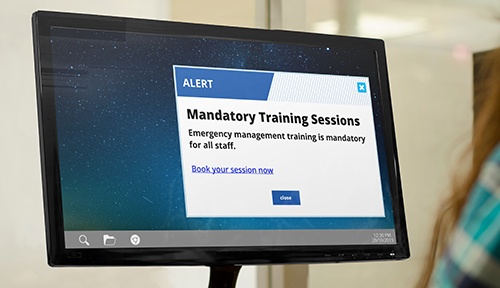
Virtual call centers are one of the growth areas in modern organizations.
Their popularity has grown out of a business need to improve efficiencies, streamline operations, and generate positive ROI.
There’s a lot to recommend them.
Costs are reduced through less demand for office space and associated maintenance.
Service is improved by employing staff in countries, time zones, or languages to meet customer requirements.
Staff turnover is lower, resulting in the retention of knowledge and reduced cost in hiring replacements.
The arrangement is readily scalable to adjust staffing levels in times of business growth or contraction.
But despite the growth of virtual call centers, they can be a mixed blessing – especially when it comes to staff engagement, driving productivity, and maintaining a brand.
Each of these objectives becomes more difficult when staff is not handily located on-site.
Fortunately, there’s a business discipline ideally suited to solving these challenges. It’s called internal communications. And this is how SnapComms can help get it done.
1. Knowledge
Working remotely in virtual teams can lead to staff being out of the loop when it comes to important information. They’re unable to attend meetings or ask questions of colleagues in person. Finding answers is more difficult or time-consuming than for their centrally-based teammates.
Instant information, delivered in bite-sized chunks, is the easiest to consume for virtual call center workers. They’re busy dealing with customer calls, while working with several software tools, and can’t afford to be distracted by floods of head office emails.
When managers need to convey urgent notifications, such as planned system outages or emergency communications, desktop alerts advise without annoying. Status updates on sales figures, product details, or reminders can be delivered engagingly via a scrolling ticker.
The contact center for Holiday Inn Club is an excellent example of successfully using internal communication tools during an emergency.

2. Engagement
When staff are working in virtual call centers they could physically be anywhere. They may be separated by miles, countries, or continents. In these environments, fostering a sense of team is hard.
Using internal communication channels is an excellent way to encourage collaboration and keep your virtual team connected. Pictures speak a thousand words, so send your daily updates or recorded meetings by video alert. You’ll find your messages are more understood and your staff better engaged.
Inject some team-building fun with weekly staff quizzes that get everyone talking. There’s nothing like a bit of light competition to motivate staff and focus them around solving a joint challenge.

3. Culture & processes
If an organization’s virtual call center is a BPO (Business processing outsourcing) or outsourced team, there’s a particular need to communicate the company culture, processes, and policies.
Call center operators must be able to identify with these standards and know their expectations for dealing with end customers. Any disconnect reflects badly on the employer and can significantly damage the brand.
Unobtrusive yet highly visible channels can reinforce these important underlying messages. Digital signage is ideally suited for satellite offices; simple but compelling desktop wallpapers for staff working from home offices.

4. Targeting
Situations can change without warning and information needs arise quickly. Notifications on price changes, product availability, staff scheduling, or even weather events may need to be communicated fast.
However, these may not affect everyone. By alerting all team members to information that may not concern or be relevant to them, you risk becoming the boy who cried wolf. Staff will learn to ignore your messages, and what you say gets lost in the ether.
Targeting internal communications by the team, group or location increases relevance and readership. It’s the same philosophy as in the consumer world. If your message has meaning, it will be heard.

5. Management
The nature of virtual call centers is that managers can’t see their team working diligently in front of them.
Working remotely, from home or satellite office, is a huge shift that increases employers’ need for reporting on staff behavior (or performance). Reporting on who’s read and interacted with communications. Identifying team members who aren’t compliant with process changes. Determining any knowledge gaps or training needs.
Effective internal communications fills in the blanks for managers and allows them to nip any issues in the bud. Staff surveys can provide a lot of useful information, without distracting staff from customer calls or feeling too onerous. The results can then be exported for easy analysis and crafting steps for action.
Successful internal communications needn’t be a headache for call center managers, even when their team is a virtual one.
The technology which supported the growth of virtual call centers can also provide the solutions to keeping team members engaged and productive.

